Explainer
- Explainer
- Water
‘The tipping point’: Where does our water come from – and could it run out?
In cities, we tend to take our water for granted. How does it get to us – and how do you put a price on it?
A droplet plummets from a cloud into a forest. It splashes on soaked soil and runs downhill into a stream. The stream flows into a river and then out to a reservoir, where it barely makes a ripple as it joins trillions of litres, all captured within the reservoir’s walls in the folds of a valley, until their release. Every day, water flows from reservoirs through treatment plants across Australia, then down thousands of kilometres of pipes to your house.
Turn on the tap – or the shower, dishwasher or garden hose – and out will pour a steady, dependable flow. For two-thirds of the world’s people, water is scarce for at least a month of the year, the United Nations says. By 2040, a quarter of children worldwide will live with water stress. Regions such as parched sub-Saharan Africa also have some of the world’s fastest-growing populations. In Australia, our capital cities churned through 2 million megalitres of water last year, and our dams, at least on the east coast, are mostly full.
Still, the sight of a dripping tap can be like nails down a blackboard – because supplies of water have not always been entirely reliable. Dam levels sank by two-thirds in Melbourne and Sydney during the Millennium Drought and dropped rapidly during a two-year drought from 2017. In Perth, another desalination plant is being built as the population grows and groundwater, which has supplied the city for decades, dwindles. And in some country towns, water still runs out. “Water security is not guaranteed, it’s tenuous,” says Robert Vertessy, a former hydrologist and now professor of water resources. “The weather can flip on you.”
Where does our water come from? And how prepared are we for the next dry spell?
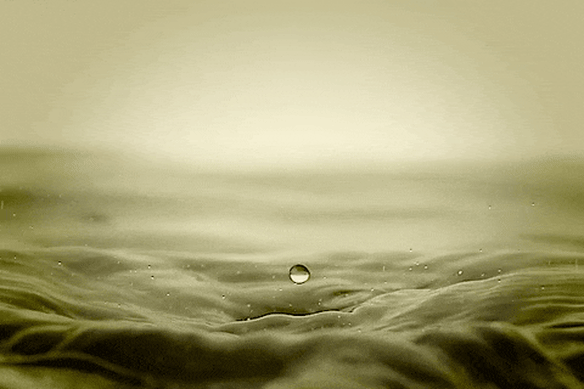
Credit: iStock
Where does our water come from?
Water evaporates from seas, lakes and rivers and is also released from plants, rising as vapour that cools and turns to rain in what’s called the hydrological cycle. When air is forced up over mountains, it quickly cools and turns to cloud, then rain or snow, in a process known as orographic lift. Across most of Australia, surface water that runs from areas of forest called catchments into rivers, streams and dams accounts for 82 per cent of the water we use. “Typically,” says Vertessy, at the University of Melbourne, “in a water supply catchment, you want an upland area that is subject to orographic lift, you want some slope to get the water drained out of the catchment, and you want some forest cover so that the water is more or less purified in its passage through the catchment.”
If gravity is “the silent, ubiquitous force behind nearly all human relationships with water”, as British anthropologist Brian Fagan contends in his 2011 book Elixir: A History of Water and Humankind, then Australia’s water systems make optimal use of it. The Upper Nepean Scheme, in the Southern Highlands, is within an area protected from most human activity. Built in 1888, it was the first system in Australia to collect water kilometres from the city, “powered” only by gravity.
“The fact they did that with the technology they had at the time is just amazing,” says Ben Blayney, head of water supply at Sydney Water. “This is up there with the Romans; it’s an amazing feat of engineering.” (The Romans famously made widespread use of aqueducts – which, in Latin, means “to lead water” – from about 300BC, though many cultures have found ingenious ways to bend water to their will, as in the 12th-century capital of the Khmer Empire, Angkor Wat, built on a vast and sophisticated hydraulic system.)
The Upper Nepean Scheme, along with Warragamba Dam – which is Australia’s biggest source of drinking water, holding about 800,000 Olympic pools – flows down to a water filtration plant in the suburb of Prospect, then in tunnels all the way to the inner city. Along the way, these main tunnels branch off into thousands of kilometres of pipes before pausing in 251 holding reservoirs, some of which are underground but most of which are at elevated points through the north, west and south of the city. “That maintains the pressure in the system for people to use,” Blayney says.
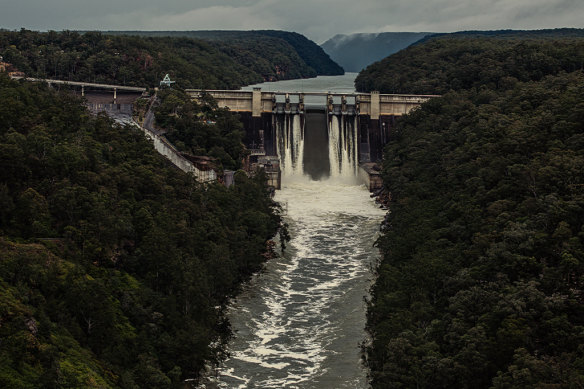
Warragamba Dam spills water into the Nepean River after heavy rain in June.Credit: Nick Moir, digitally tinted
Victoria’s oldest reservoir, Yan Yean, was built in 1853 and sits in a protected area, as do catchments in the Yarra Ranges, home to the Thomson Dam and the O’Shannassy, Upper Yarra and Maroondah reservoirs. Created in the 1880s, much of this water system is now in national parks and state forests where human activity is limited, sparing the water from contamination by human and pet waste, rubbish or pathogens.
Melbourne’s water also mostly moves by gravity, from the hills out east to the west. “It makes sense that the Thomson [Dam] sits at the highest elevation of any of our reservoirs and provides most of the city’s water,” says David Norman, Melbourne Water’s head of water supply. “We’ve got a really wonderful set-up.” For Norman, the Thomson, which provides 60 per cent of Melbourne’s water, is the “lungs” of the city’s water while Silvan Dam, in the foothills of the Dandenong Ranges, is its “heart”.
The water at Silvan doesn’t need impurities filtered out but, as with much of Australia’s water supply, it has tiny amounts of fluoride added (a public health measure to help prevent tooth decay) and less than two milligrams of chlorine for every litre. It then flows into 32,400 kilometres of pipes to smaller reservoirs servicing the suburbs. Both Melbourne and Sydney’s water is considered “soft”, which means it naturally has a low concentration of minerals such as calcium and magnesium (and makes soap into a frothy lather), but further north, in Brisbane, and west in Adelaide and WA, it’s generally “hard”.
Water corporations also test water quality for clarity, pH levels, bacteria and contaminants. In June, following a report by this masthead, Sydney Water confirmed it had detected the “forever chemicals” PFAS at low levels in several filtration plants. WaterNSW has disconnected some water sources in the Blue Mountains while it investigates.
The story is different in Perth, where water came from natural springs and man-made dams until the 1970s when it started to dry up. Amid water restrictions, many households installed backyard bores to water their gardens. Today, 40 per cent of Western Australia’s domestic supply comes from three overlapping aquifers, vast bodies of porous rocks and sediment through which water moves, known as the Gnangara groundwater system. To the city’s north: the Superficial Aquifer, near the surface, is used mostly on gardens and ovals, while the Leederville and Yarragadee aquifers, deep underground, supply drinking water. “So very small amounts trickle through this process,” says Vertessy, “but over many years, of course, they accumulate into quite large water reserves.” The deepest water is up to 35,000 years old.
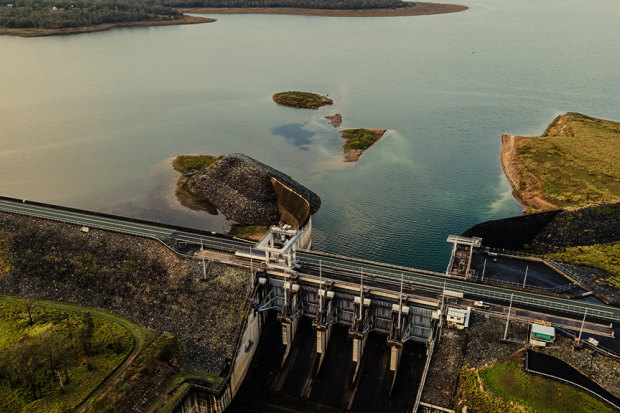
Wivenhoe Dam provides drinking water for Brisbane, Ipswich, the Gold Coast and other areas.Credit: Getty Images, digitally tinted
More than 100 towns from northernmost Queensland to central NSW and South Australia rely on groundwater too – from one of the world’s biggest aquifers, the Great Artesian Basin, which could fill Sydney Harbour 130,000 times or Port Phillip Bay 2600 times. Its sandstone base is covered in marine sedimentary rock dating back to the inland Eromanga Sea 110 million years ago.
And there’s another source: desalination, which converts seawater to freshwater. The technology used today, widespread in the Middle East and North Africa, was developed in the 1960s, and there’s at least one “desal” plant in all capital cities in Australia now, bar Hobart, Canberra and Darwin. Nearly a third of Perth’s water came from its two desal plants in 2022-23; another is being built north of the city in Alkimos. Desalinated water accounted for 11 per cent of Sydney’s water in 2022-23 and less than 1 per cent in Melbourne. During a dry year, Melbourne’s plant at Wonthaggi has provided up to 30 per cent of the city’s water.
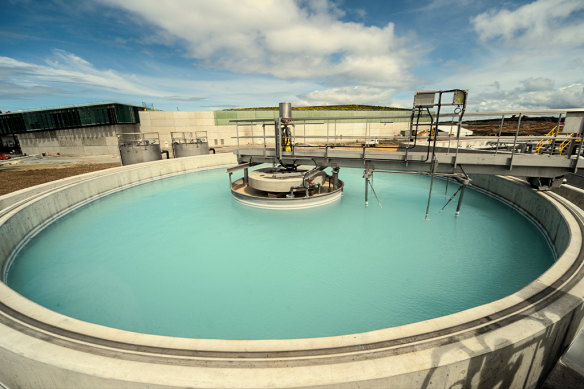
The desalination plant at Wonthaggi in Victoria.Credit: Photo: Getty Images, digitally tinted
How do you put a price on water?
The typical residential water bill in Australia in 2022-23 was $1495 a year. The City of Gold Coast had the highest typical bill of $1710 while Greater Western Water, which services Melbourne’s west, had the lowest amount of $947. But what are you paying for? In general, half of the bill is for the supply of water – the upkeep of the infrastructure and the operating costs of the corporations that oversee them – and the rest is for sewerage.
There is a water supply charge by volume, too – your water meter records how much you use – but it makes up just a small portion. In Sydney, each person uses about 200 litres of drinking water a day, with showers, toilets and the garden together making up about two thirds of consumption, according to Sydney Water.
The United Nations has declared access to clean water to be a human right, a necessary part of having an adequate standard of living. “At the core of any functioning and healthy society is clean water and sanitation services,” says Adam Lovell, executive director of Water Services Association of Australia, the peak body representing water utilities. “And everybody should have some sort of access to that.” The price of domestic water is regulated in each state and territory to ensure water remains affordable.
“The bottom line is,” says Quentin Grafton, a water economics expert at ANU, “the prices that people are paying represent, in Australia, either a regulated price in an urban context, which is based on covering costs, or they’re based on a market price which is based on supply and demand in the context of [agricultural] water entitlements.” Nearly three-quarters of the world’s freshwater is used in agriculture, not in homes. Australia’s Murray-Darling Basin accounts for 62 per cent of the nation’s irrigation water, particularly for cotton, fruit and nuts, and grazing pastures.
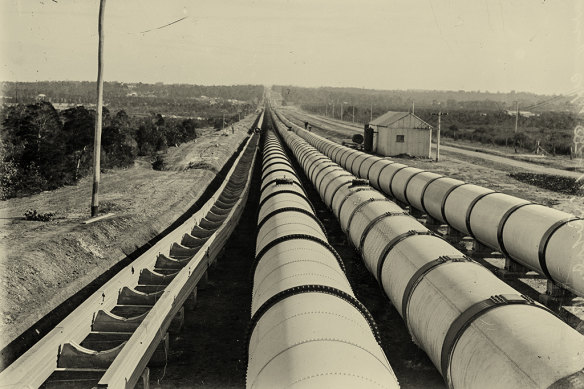
The Cordeaux Dam pipeline in New South Wales c. 1926.Credit: National Library of Australia, digitally tinted
In the Basin, irrigators have participated in water markets since the mid-1990s, when rights to draw water from rivers were allocated by how much land farmers occupied. Governments from the early 2000s then agreed to a National Water Initiative that allows a free market, where farmers buy shares in water, and prices fluctuate depending on its availability.
Many parts of the world don’t have formal water trading markets for irrigators. The Global Commission on the Economics of Water, set up in the Netherlands in 2022, believes the low price of water in many countries is unsustainable and encourages its “profligate use”. “It can also quite unwisely skew the locations of the most water-intensive crops, and water-guzzling industries such as data centres and coal-fired power plants, to areas most at risk of water stress,” a commission report states.
It’s “certainly true that water is underpriced in many parts of the world”, says Grafton, but he believes Australian consumers and industry pay a fair price. However, he doesn’t believe the price accounts enough for the depletion of rivers and streams.

Control of water is central to the story in the Bond film Quantum of Solace.Credit: Karen Ballard
A primary issue in the Murray-Darling Basin is balancing the use of water for agriculture with preserving the environment. Says Robert Vertessy: “In the Murray-Darling Basin, in particular, you have to say there is a water security problem because there isn’t enough water to supply all the demands that are being put on it ... Some people might want to see the Murray-Darling returned to its natural state. It’s a matter of perspective and what people really want that raises the question of water security. Water management has multiple values often in conflict with one another.”
Meanwhile, around the world, “water wars” is a term used in all sorts of contexts. The 2008 James Bond film Quantum of Solace, whose villain seeks a monopoly on Bolivia’s fresh water supplies, is said to have been inspired by actual events in 1999 when protests erupted after water prices spiked following the privatisation of the city of Cochabamba’s supply. As The Economist observed in 2019, while water is rarely the sole cause of conflict, “it seems likely that water will be an aspect of ever more conflicts”, whether as a target of military action, as a weapon (for example, diverting a river to cause floods) or as a trigger for unrest. The flow-on effect of water scarcity on food prices can cause instability, notes Liz Saccoccia, a water security associate at the World Resources Institute in Washington. “Once you get food price spikes and then that leads to, oftentimes, protests and then violent repression by the government for those protests, that’s how you actually get a conflict.”
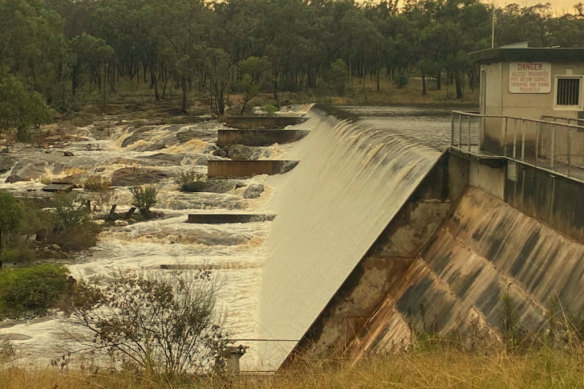
Finally, the Storm King Dam spills over in Stanthorpe after drought led to a massive water-carting operation for 18 months.
How secure is Australia’s water supply?
On January 13, 2020, the town of Stanthorpe in Queensland’s Southern Downs reached “day zero” – its dam had run out. It had barely rained for months, farmers had curbed their planting, the bush felt like an eerie tinderbox. “That’s the thing about droughts,” town resident Morwenna Harslett tells us. “They just creep up on you.”
When a bushfire tore across the town’s outskirts, “we knew we were in a disaster”, says Harslett. The council restricted water to 100 litres a person a day, then to 80 litres. People started to put buckets in their showers and used them to flush toilets. They reused the water in their washing machines for several loads.
What sustained Stanthorpe, population 5000, was one of the biggest water-carting operations in Australian history. For 18 months, 24 hours a day, trucks drove past Harslett’s home as they delivered load after load of fresh water to a tank next to the dam, by then a mud bowl. Transporting the water cost nearly $15 million. “We were getting a megalitre a day. There would have been seven or eight trucks an hour,” Harslett recalls. “It was this constant convoy.”
‘Because we’re seeing these extremes, how do we adapt within a very rapid period to those?’
Australia is, of course, no stranger to water crises. Sydney’s first water source, the Tank Stream, needed to be abandoned in 1826 due to pollution from industries such as tanneries and candle makers. Later that century, the Botany Swamps and Cooks River were also suffering from pollution until the Upper Nepean Scheme provided an alternative water source. In Melbourne, typhoid was rife in the “Yarra Soup” of the Gold Rush era. And the Federation Drought of 1895 to 1902 was one of the most severe, with Australia losing 40 per cent of its cattle.
But today, overall, our drinking-water supplies are secure. Carmel Pollino, director of water security at CSIRO, tells us she “can’t see a scenario where we would run out”. However, she says, “there will be future droughts that test us”. “If we saw climate change manifest itself in a fairly average pattern of change, I think we’d be pretty good at adapting to that. But because we’re seeing these extremes, how do we adapt within a very rapid period to those?”
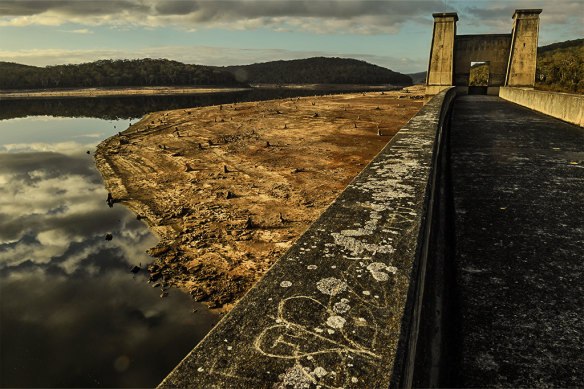
Low water in the Cordeaux Dam in the Upper Nepean Scheme in 2018.Credit: Nick Moir, digitally tinted
During the Millennium Drought, Sydney’s dams dropped by half over four years before sinking to a third-full; in the 2017 to 2019 drought, the same thing happened in just 2½ years. James Harrington, a senior project manager at Sydney Water, says the city is reaching a point where, due to changes in weather patterns and population growth, “rainfall equals the amount of water that we use per day”. “That means we’re now at the tipping point, or we’ve just passed it, where in an average year, we will see our dams start to deplete.”
Melbourne’s reserves are in a strong position after four years of above-average flows into dams; the desalination plant was last used in 2022. “We can meet demand in the short term,” says Melbourne Water’s David Norman. Overall, the corporation has projected it might need an extra 85 gigalitres of water by 2030 to meet the city’s needs under a worst-case climate change scenario. After the Millennium Drought, it took a decade for the Thomson to refill, Norman says.
‘One challenge for Perth is that its aquifers have declined by up to 10 metres in some areas, losing 1000 gigalitres of water.’
In Perth, rainfall has slowed by 20 per cent since the 1970s and run-off into dams by 80 per cent. “Perth is in the middle of one of these areas where there’s been a major change in the way that the weather has worked in that part of the world,” says Vertessy, who was formerly director at the Bureau of Meteorology. “That’s resulted in much more stable atmospheric conditions there, which have been less likely to give rise to rainfall. So they’ve had to pivot their water supply strategy towards more groundwater extraction, but also to desalination and water recycling.”
One challenge for Perth is that its aquifers have declined by up to 10 metres in some areas, losing 1000 gigalitres of water. The city’s Water Corporation has been using purified recycled wastewater to recharge them since 2017. A plant at Craigie in Perth’s north purifies water to drinking standard and pumps it back into the aquifers via a bore, while water is also transferred for injection several kilometres away on the city outskirts.
In some residential areas in Sydney and Melbourne’s growing suburbs, water is recycled to below drinking standards and sent via “purple pipes” – their colour chosen so they can’t be mistaken for other utilities. They’re often used to water golf courses or parks. But the economic case for retrofitting established areas and houses with purple pipes often doesn’t stack up, says Stuart Wilson, deputy director at the Water Services Association of Australia. “We’d all like to have non-potable [non-drinking] water for the house, but it just costs a lot to try and get it there on a wide scale.”
What has a far better return, he says, is putting drinking-quality recycled water into dams and reservoirs, as Perth does. Sydney Water has a plan for up to a quarter of the city’s water supply to come from recycled water by 2056. At its Quakers Hill wastewater plant, the water corporation is trialling purifying water that it would otherwise send back into creeks and to the sea. It plans to be using purified wastewater to top up Sydney’s drinking water supply by 2031 or 2032.

A water treatment plant in suburban Craigie in Perth. Credit: Water Corporation, digitally tinted
One challenge will be changing people’s minds about drinking purified recycled water. In 2006, residents of Toowoomba voted in a referendum on whether to use recycled water as drinking water: 62 per cent voted against it. Today, if supplies decline to 40 per cent, South East Queensland’s Water Authority, Seqwater, can ask the state’s water minister to sign off on adding recycled water to the drinking supply.
Harrington says Sydney Water perceives the biggest hurdle is “people don’t believe that we need it”. “But we still are looking at an uncertain future where we need to be prepared for the next climate shocks or more population growth. And so, once we have the conversation of where we’re at – talking about desalination, or options of increased recycling water, small areas of stormwater, the realities of what new dams look like – a lot of people are very much in support.”
In 2021, when it finally rained heavily in Stanthorpe again, the mood was “like a festival”, says Morwenna Harslett. “We ran down the street in the rain. When you went and did your grocery shopping, people were smiling again. People would stop to chat again. It was a genuine celebration.”
Get fascinating insights and explanations on the world’s most perplexing topics. Sign up for our weekly Explainer newsletter.
Let us explain
If you'd like some expert background on an issue or a news event, drop us a line at explainers@smh.com.au or explainers@theage.com.au. Read more explainers here.